How to replace the lock cylinder?

Replacing a door lock is an off-guard event. Failure of the mechanism, loss or breakage of the key, change of tenants in the apartment or elementary wear of the locking device - all this is the rotation of the lock. The situation is saved by the fact that instead of completely changing the mechanism, it is possible to replace only the larva (code part) of the door lock.
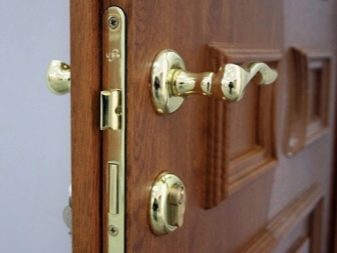
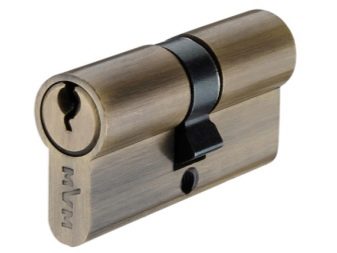
Device
If we talk about the design of a door lock, there are significant differences in its types. In private houses and apartments, a variety of devices are installed that can protect the home from unauthorized entry. A device that ensures the secrecy of the locking device is called a core, a larva or a secret. In essence, it is responsible for security against unauthorized burglary and intrusion of intruders into the living quarters.
A key is inserted into the core and scrolled. At the same time, the spring-loaded split pins (pins) inside it rise to a predetermined position, and the lock is unlocked. Incorrectly lined pins prevent the closing bolt (crossbar) from moving off the ground, and the door in this situation will remain locked.
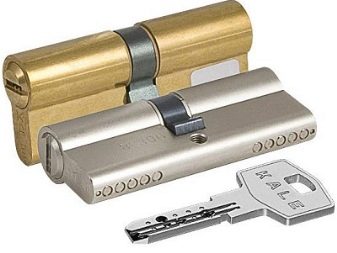
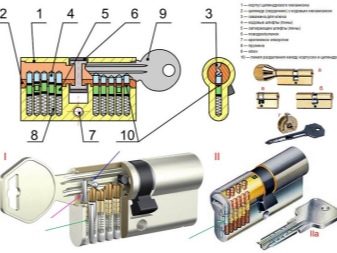
In some designs, split pins are replaced by washers (disks) that rotate at different angles, movable probes, or rotating blocks. But regardless of the filling in the cylinder, the secrecy of the code part of the locking mechanism depends on the number of components and the degree of their compliance with the predetermined parameters.
Not all available locking devices mounted on the entrance door leaves have the ability to fragmentary replacement. Individual mechanisms have to be replaced completely.
For example, the lever (code) devices are mounted directly into the body of the device, as a result of which the change of the larva is not feasible in this case. It is necessary to disassemble, remove the lever mechanism and install a new one.
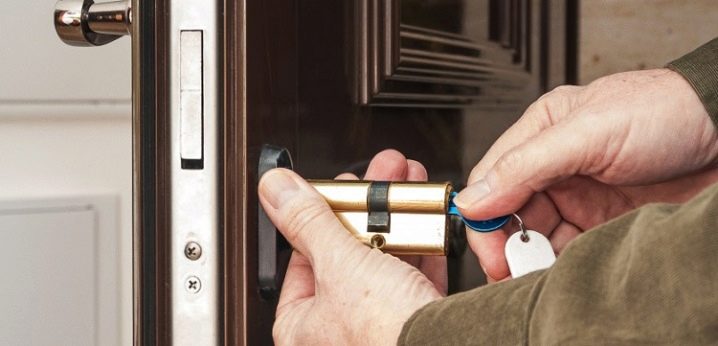
Secret
"Secret" consists of:
- larva body;
- core;
- code pin
- locking pin;
- checkbox.
There are several types of locking devices for entrance doors. They are overhead, mortise (with a key locking mechanism both from the street and from the inside, or closed from the inside by means of a special turntable instead of a key). In addition, they are subdivided into lower and upper - only with the option of closing and with additional fixation by means of a latch.
The material used in the production and the number of core combinations depend on:
- strength and protection against mechanical stress;
- wear resistance;
- lack of key similarity.

The "secret" of the locking device has 3 levels of secrecy.
- Low - from 100 to 10,000 code options. It is made of materials with low strength with a simple key configuration.
- Average - from 5 to 50,000 code options.It features a complex opening device, but performance sometimes leaves much to be desired.
- The highest - from 100,000 code variants and above. High quality materials are used. Differs in high-precision assembly.
Any of the locking devices has its own design features, which determine the methods and the possibility of changing its core.

Cylinder (or "English") locks
This example of locking devices appeared in the middle of the 19th century. An unpretentious and practical cylinder-type device is currently the most demanded. Locking cylinder mechanisms are produced according to the European DIN or RIM standard, which are currently produced in limited quantities.
"Sekretki" of different manufacturers of the DIN standard are able to replace each other. They are selected based on the thickness of the door leaf and the location of the fixing screw relative to the inner and outer sides of the door.
Cylinder mechanisms have their own classification.
- Locking system: spin key. Inside the room, the door is unlocked by means of a rotary handle (special turntable), which can be easily found in the dark, in a smoke-filled room (in case of fire) or in an emergency. "Sekretka" has a maneuverable cam that imparts movement to the bolts. Usually, its installation needs to be adjusted on site.
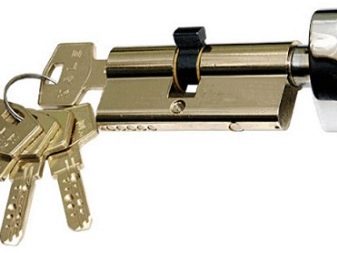

- Locking system: key-key... The door leaf can be unlocked both from the street and from the inside by means of a key. Such a core is practical if it is required to close the front door so that it cannot be opened from the inside of the room. The key inserted into the borehole of the indoor locking mechanism can be used as an auxiliary protection. It will be impossible to open the front door from the outside.
- Locking system: half cylinder... The door can only be unlocked from outside. A semi-cylinder is mounted in the door leaves of rooms where there are no people. These are, as a rule, small utility rooms or structures for special purposes (for example, for storing weapons and ammunition).
- Locking system: gear design... The transfer of the stroke from the key to the bolt is done through a gear, the number of teeth of which depends on the modification and manufacturer.
The procedure for replacing such a lock with a gear is not an easy task, and only a master can help in its solution. To install a new cylinder, it is necessary to remove the locking device completely.
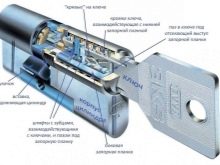
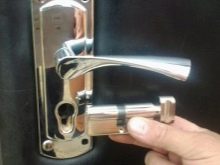
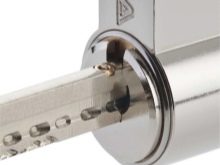
Disc (Finnish) locking mechanisms
The main difference between such devices from other cylinder-type locks is their structure: instead of pins or pins, movable disks are installed, lining up at a certain angle when the locking mechanism is opened. Key - with a semicircular section, with cuts made on it in strict accordance with the position of the discs.

The design feature of the "secret" of the disk lock is the ability to change it to a similar cylinder. But buying it separately from the castle is problematic.
Therefore, the best option would be to replace the entire structure of the locking device.
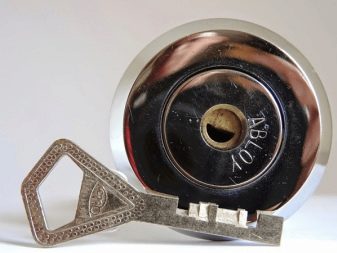

Cross locks
In devices of this modification, pins are used that line up on 4 sides in the body of the secret when the key is turned. Cross-type cylinders have many combinations, but you can easily open the locking mechanism with a cross-head screwdriver. Experts advise against replacing cylinders on similar devices.
The best option is to rotate the entire structure of the castle. But all the same, its complex disassembly will be required.
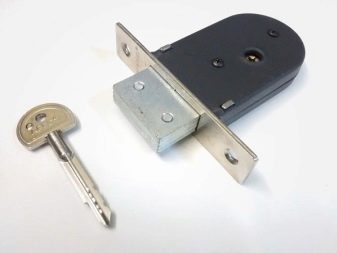
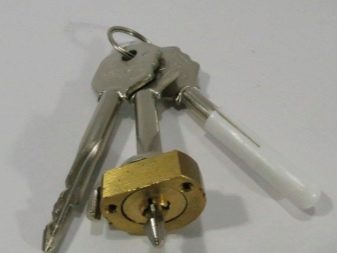
Pin locks
"Secrets" of such locks are made for 2 types of keys. The locking mechanism is not very reliable, but it can only be broken by knocking out the "lock" or drilling it out. The rotation of the larva of the mechanism is carried out according to the above described method.
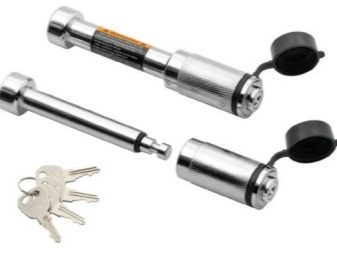
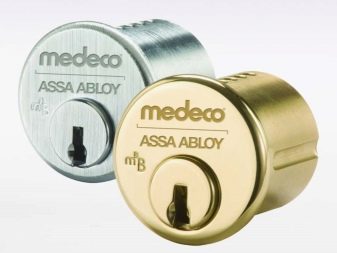
Complex locking devices
Manufacturers are working to improve the reliability of locking mechanisms, including the secrecy of the code part of the lock. By purchasing quality products from well-known brands, you can avoid replacing the door lock cylinder.
Complex devices have:
- protective armored inserts;
- titanium case;
- over 1 million combinations;
- pins made of wear-resistant metal;
- floating components or magnetic insert in the key.
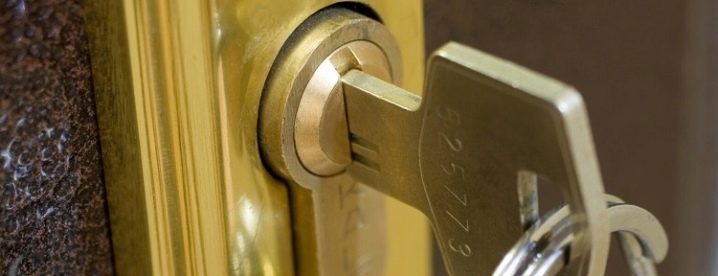
Possible malfunctions
The rotation of the cylinder of the locking device of the entrance door is carried out when the mechanism ceases to function properly.
This happens for various reasons.
- Natural wear of the part after prolonged use of the lock. Any lock, along with the warranty period, during which the device is repaired free of charge, has its own service life. After the specified time has elapsed, it is better to change the entire product or change the main functioning mechanism.
- A defective part has been installed.
- The secret is wrong, namely: when mounting the lock, the installation technology was not followed. How to replace a cylinder in a similar situation? It is necessary to make the installation first, taking into account past flaws.
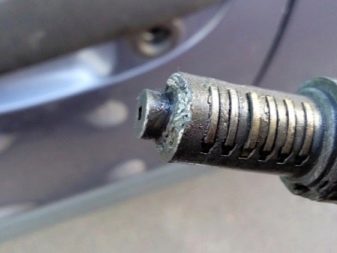
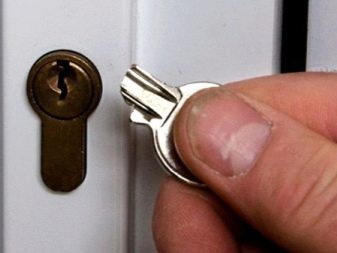
- Unsuccessful attempt to open the locking device with another key. The used master key will break or it will simply jam in the mechanism. In addition, the normal functioning of the locking device may be impaired.
- The door leaf is warped from dampness or other reasons. This situation leads to the need to rotate the "secret" or the entire lock. It all depends on the shape and scale of the skew.
On a note! To insure yourself against the purchase of low-quality products, it is better to buy products from well-known manufacturers in specialized stores.
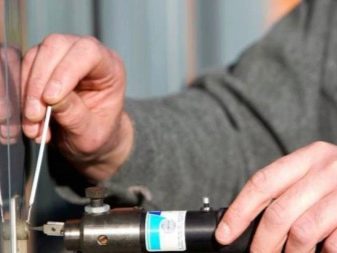
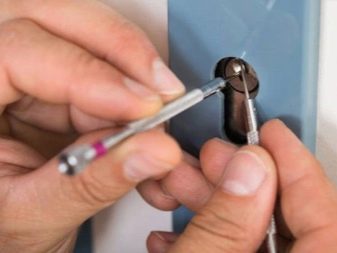
How to remove and replace?
Before undertaking this work, you need to make sure you have the necessary tools.
To remove the larva from the body of the locking mechanism, you need to prepare the tools:
- screwdriver;
- tape measure or ruler,
- calipers;
- new core;
- oiler.
The screwdriver is selected in accordance with the slots that are identical to the fixing screw. As a rule, this is a PH2 cross recess. You can use a screwdriver with attachments, for example, furniture, with a low engine speed and good power, or an electric drill with attachments.
The latch of the core in the mortise locking mechanism is located at the end of the door leaf, on the lock plate. A tape measure, ruler or vernier caliper is necessary to determine the size of the original lock. It is possible to supply the core with a longer length than the thickness of the door leaf (only no more than 5 millimeters).
Despite all of the above, the danger of burglary remains, since the part that looks out from the outside can be easily cut down or broken and, therefore, access to the turning device can be obtained.
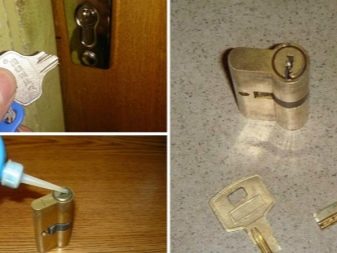

Dismantling the old secret of the locking mechanism
In order to get an old larva, you need:
- open the door leaf;
- unscrew the fastening screw at the end of the door;
- insert into the key hole and align the swivel tongue;
- push the cylinder with your finger from the outside (until it pops in).
If for some reason it is not possible to extract the secret (for example, the key is jammed in the lock or the core mechanism is out of order), use an electric drill with a large diameter drill (approximately 10 millimeters). It is necessary to drill out the core to the end. Then turn the swivel mechanism and pull out the "secret", or rather, what is left of it.
Regardless of the size of the drill, the metal lends itself without difficulty, because the larvae are made from brass or another alloy of light non-ferrous metals.
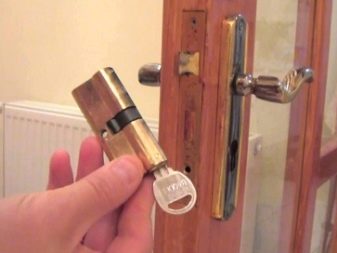
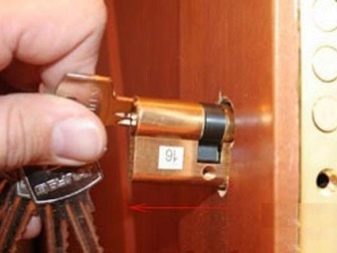
Rotation of the core in a mortise cylindrical locking mechanism with overlays on the handles
When handles with overlays are included in the door lock, before proceeding with the repair, it is required to loosen their fixing screws (4 pcs.). As a result of these actions, access to the core will open. After removing the faulty larva, a new one must be put in its place. To do this, a key is placed in the "lock", and it is put in such a position when the tongue of the pusher is lowered into the body of the lock.
The exact sequence of actions is followed.
- “The secret is mounted in a hole in the body of the locking mechanism. The position should be such that the fastening screw from the end of the door leaf clearly enters the hole on the larva. Inaccuracies are unacceptable, as they lead to skewing of the pushing device.
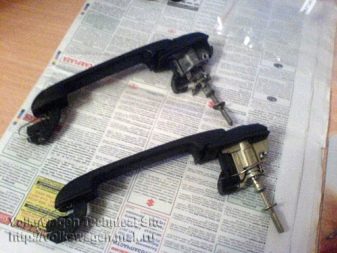
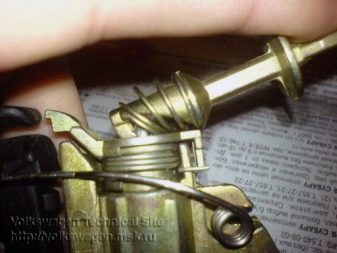
- The fixing screw is tightened to the stop.
- The functionality of the lock is tested. The key turns several turns in the direction of movement of the watch hand and in the opposite direction.
- The assembly of the lock is carried out in the opposite sequence - the pads and handles are fixed.
If everything is functioning normally, we can say that the repair work has been completed. Before installing the larva, it is advisable to lubricate its rotating elements - the larva and the pusher. Excess oil is removed with a clean cloth.
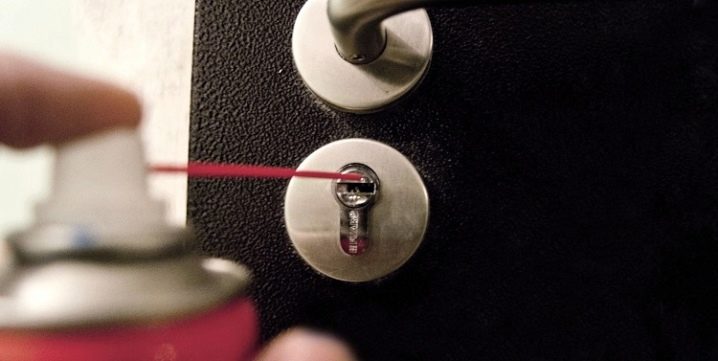
Rotation of the core in the mortise locking mechanism with the cylindrical mechanism without handles
If the locking mechanism is not designed for the use of handles, the sequence of operations remains the same. But in this case, it is not necessary to dismantle the pads and handles. Access to the core in such modifications is open, and dismantling begins immediately by unscrewing the locking screw at the end of the door.
With proper installation, proper care and careful operation, a mortise lock can last a long time and guarantees the protection of your home from burglars.
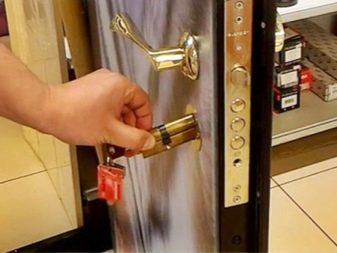
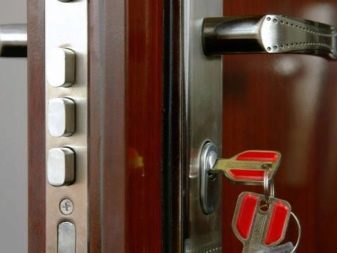
Replacing a patch lock core
The sequence of actions for rotating the lock in the attachment device is slightly different compared to the mortise.
- 4 screws are unscrewed, fixing the locking device to the door. The mechanism is dismantled from the door. The screws securing the patch lock can have a complex configuration or have recesses for an imbus key.
- The rear cover of the locking mechanism is dismantled, for which 4 screws holding it are released.
- The larva is fixed with 2 screws, which must be unscrewed to release the core.
- Reassembly. A new secret is being installed. The 2 fixing bolts are screwed in.
- The back cover is installed. The 4 fastening bolts are tightened.
- The locking mechanism is installed in the old place and fixed to the door leaf.
Along with 4 screws on the outer surface of the door, overhead devices are fixed with auxiliary screws at the end of the door.
Before finally tightening all the screws, it is required to check the operation of the mechanism.... To do this, the gear turns both clockwise and counterclockwise. If the locking device functions properly, then the screws are tightened to the end, with the utmost effort.
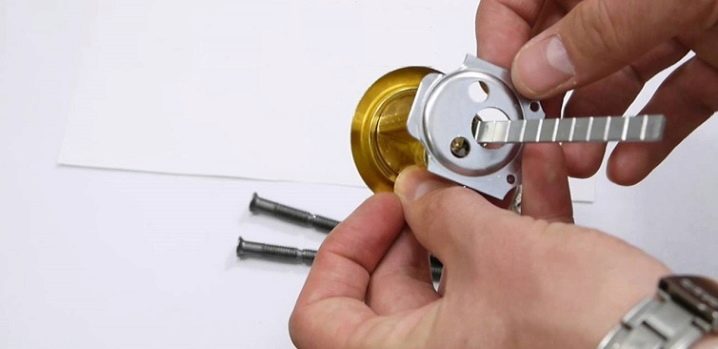
Replacing the lock of the locking mechanism with a cross-shaped (cross) key
Cross key locks are losing their relevance. It is not always possible to find spare parts for them. But you can make an attempt and change the "secret" of such a mechanism.
The sequence of steps is followed exactly.
- The handles and covers are removed from the locking device (if any). On the inside of the door leaf, 4 fastening screws are unscrewed.
- On the face plate in the end part of the door leaf, 2 screws are loosened that hold the lock in the door. The body is removed from the canvas.
- To remove the cover from the case, all screws located outside the lock are unscrewed. Their number can range from 4 to 8.
- The cross core is turned out. As a rule, it is fixed with 2 screws.
- Instead of a failed larva, a new one is mounted and fastened with 2 screws.
- After checking the functionality, the locking device is reassembled.

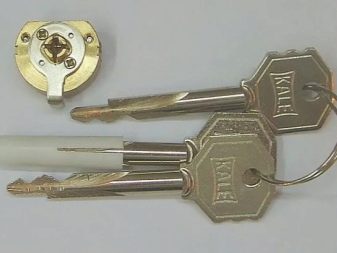
How to choose a new maggot?
Following these helpful tips will help you avoid mistakes when choosing a new larva.
- Close attention is paid to the size of the larva. The diameter and length of the new core must exactly match the parameters of the prototype. If you buy a new locking mechanism, then you need to pay attention to the thickness of the door leaf. The lock should be longer in length.
- Manufacturer and price, brand and ranking - it all matters. Don't skimp on the core
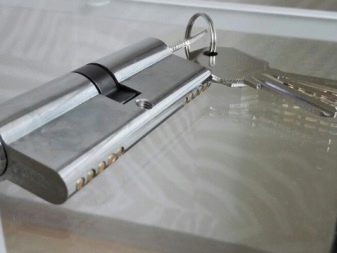
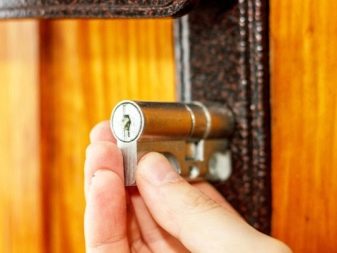
- The shape of the lock and the location of the mounting hole are of fundamental importance. The distance between the end face and the hole on the new core should be no less than the same on the old key core. More is possible, and from 2 sides.
- "Sekretka" must be sold in a complete set with several keys (from 4 to 6 copies). Before purchasing the selected desired option, it is imperative to check its performance by inserting all the keys into the larva one by one and turning them.
- Particular attention is paid to the color scheme of the selected larva. The color of the metal from which the larva is made must match the color of the locking mechanism.
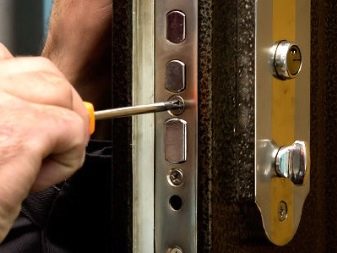
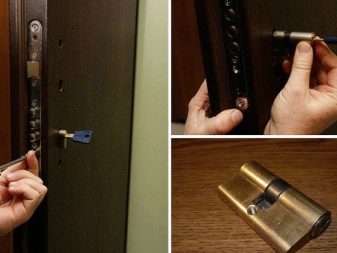
The simplest way is to purchase a copy or a prototype of the existing core. Lock modifications are standard, but there are variations. The main thing is that the key moves perfectly, is inserted into and out of the keyhole without effort.
If it is not possible to take the device with you (for example, it is installed in the doorway and you cannot leave the dwelling open), take measurements from the core (diameter, length, distance from the end to the mounting hole and the manufacturer's company). Visually remember its colors. After purchasing a new core, all that remains is to install it in place.
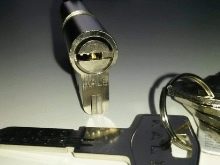
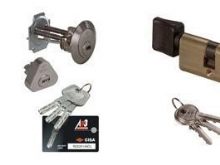
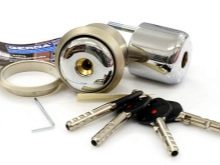
Functional check
After installing the new core, the operation of the locking mechanism is checked with the doors open, then with the door leaf closed. There should be no extraneous noise during the locking and unlocking process. The new "secret" is distinguished by a soft ride and no backlash.
Locking device is being lubricated (any lubricant suitable for the mechanism) in order to prolong its life and prevent the formation of corrosion. The core should also be lubricated.... To do this, you need to drip a few drops of oil onto the key and insert it into the core, scroll 3-6 times, then wipe with a soft cloth.
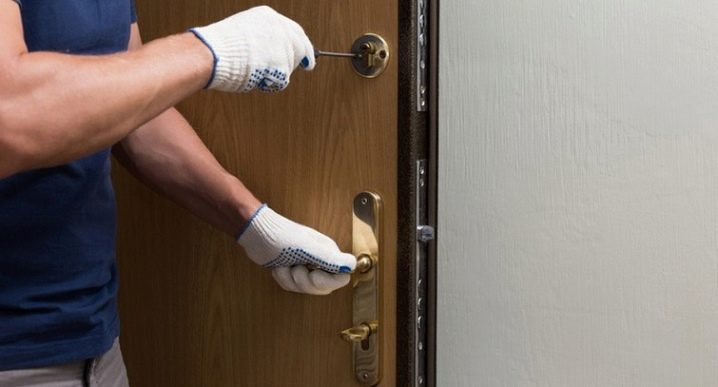
If a "lock" with a turnkey hole was installed from the inside of the door and from the street (in order to close or open the entrance door from the room, a key is required), then you can put a core with a rotary handle. In place of the mechanism without a core, a device with a "lock" is installed - this will save time and money in the future, for the reason that the rotation of the core is faster and more economical than changing a solid lock.
If everything is done correctly, there is nothing difficult in replacing the locking mechanism. The main condition is not to rush. Dismantling and installation will take no more than 10-15 minutes.
In the next video, you will have to replace the cylinder (cylinder) of the front door lock in 3 minutes.













The comment was sent successfully.